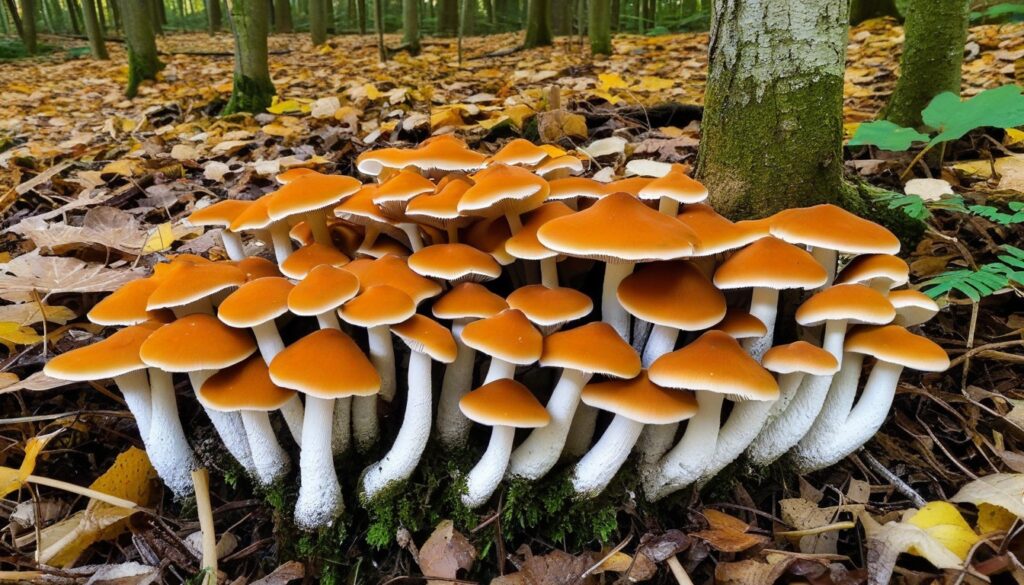Autumn is a beautiful season in Pennsylvania, and what better way to experience its wonders than mushroom foraging? If you’re a first-time forager or a seasoned pro, this comprehensive guide is for you. Join us as we explore the diverse range of fall mushrooms found in Pennsylvania, provide tips for identifying edible varieties, and suggest prime locations to increase your chances of success. We’ll also share culinary inspiration and safety precautions to ensure a memorable autumn foraging adventure.
Key Takeaways
- Fall mushrooms in Pennsylvania offer a unique opportunity to explore the state’s natural beauty and savor the flavors of the season.
- Identifying edible mushrooms takes practice and knowledge. It’s essential to understand the characteristics and habitats of different varieties to differentiate them from their toxic counterparts.
- The best locations for fall mushroom foraging in Pennsylvania include state parks, forests, and other wild areas.
- Foraging sustainably and ethically is crucial to preserve the environment and respect other foragers’ rights.
- Fall mushrooms in Pennsylvania offer numerous nutritional and medicinal benefits, making them a valuable addition to your diet.
Types of Fall Mushrooms in PA
In Pennsylvania, fall brings a diverse range of mushrooms for foragers to discover and enjoy. Each mushroom has its unique characteristics and habitats. Here are some of the most popular types of fall mushrooms in PA:
Mushroom Name | Characteristics | Habitats |
|---|---|---|
Porcini | A meaty texture with a nutty flavor and a cap that can range from brown to reddish-brown. | Coniferous and deciduous forest floors. |
Chanterelle | A delicate scent of apricots with a slight peppery flavor and a bright yellow or orange cap with wrinkles and gills running down the stem. | Coniferous and deciduous forests, especially near oak trees. |
Hen of the Woods | Also known as maitake, has a rich, earthy flavor and a fan-like shape with a grayish-brown color. | Grows at the base of oak trees and other hardwoods. |
Black Trumpet | A rich, velvety texture with a sweet and buttery flavor and a long, trumpet-like shape that can be black or dark brown. | Grows on and around dead hardwood logs. |
A delicate, seafood-like flavor with a texture that is similar to crab meat and white spines that form a long, flowing mane. | Grows on dead or dying hardwoods, especially oak and maple. |
These are just a few examples of the types of fall mushrooms you can find in Pennsylvania. Learning about their unique characteristics and habitats can help you identify them better while foraging, ensuring that you are harvesting only the safe and edible varieties.
Identifying Fall Mushrooms in PA
Fall is an excellent time to forage for mushrooms in Pennsylvania as the damp, cool weather is ideal for their growth. However, it’s essential to differentiate between edible and toxic varieties to avoid potential health risks. To make the most out of your fall foraging adventure, here are some key features to look for when identifying fall mushrooms in Pennsylvania:
Mushroom | Characteristics | Habitat | Edibility |
|---|---|---|---|
Chanterelle | Bright golden-yellow color, gill-like ridges | Deciduous or coniferous forests, often near trees | Edible, meaty and flavorful |
Porcini | Brown cap, thick stem, white pores | Pine and oak forests, near conifers | Edible, versatile and flavorful |
False Morel | Brain-like cap, irregular shape | Coniferous forests, near trees and stumps | TOXIC, contains dangerous toxins that can cause liver damage |
Jack-O-Lantern | Orange cap, gills that glow in the dark | Deciduous forests, often near rotting wood | TOXIC, can cause vomiting and diarrhea |
Remember to look at all parts of the mushroom, including the cap, stem, gills, and pores. Always use caution when foraging for wild mushrooms and consult with an expert if you have any doubts about identification.
In the next section, we’ll explore the best locations for fall mushroom foraging in Pennsylvania.
Best Locations for Fall Mushroom Foraging in PA
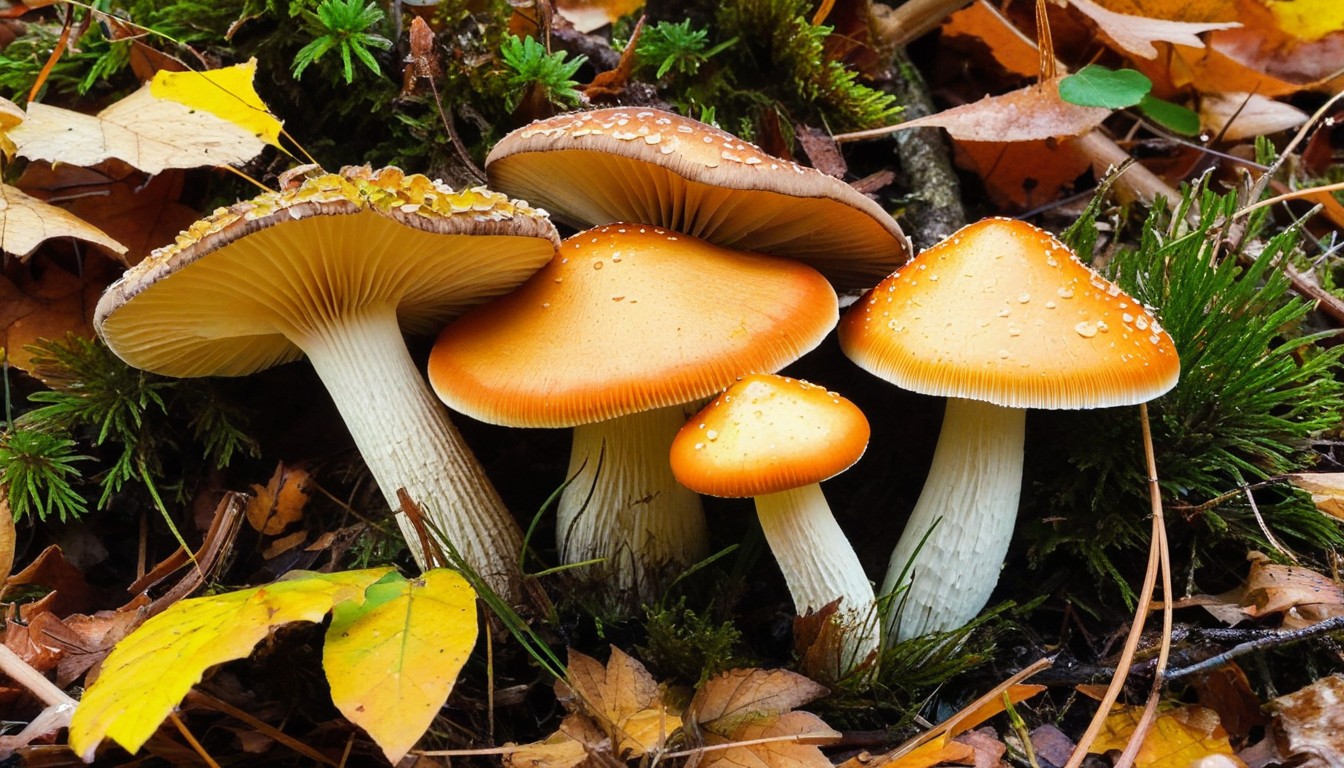
If you’re an avid mushroom forager searching for the best spots to harvest fall fungi, Pennsylvania has plenty to offer. From dense forests to rolling hills, the state’s diverse landscapes provide an abundance of prime areas for mushroom hunting. Here are some of the top locations to explore:
Location | Features |
|---|---|
Hickory Run State Park | Nestled in the Pocono Mountains, the park is home to a variety of mushrooms, including Hen of the Woods, Gem-studded Puffball, and Chicken Mushroom. |
Pine Grove Furnace State Park | This park encompasses the Appalachian Trail and offers an array of mushrooms, such as the Blewits and Oysters. |
Michaux State Forest | Known for its sprawling tracts of mixed hardwoods and pine trees, the forest contains Chanterelles, Matsutakes, and numerous other fall mushrooms. |
Loyalsock State Forest | With over 100,000 acres of land, this forest is a haven for mushroom enthusiasts, with prime locations for Morels and Lobster Mushrooms. |
Presque Isle State Park | This park has plenty of fall mushrooms, including edibles like Honey Mushrooms and Puffballs. |
Before heading out to these or any other locations, be sure to obtain the necessary permits and familiarize yourself with the rules and regulations governing mushroom foraging. Happy hunting!
Hunting Tips and Techniques for Fall Mushrooms in PA
If you’re new to fall mushroom foraging in Pennsylvania, you may feel overwhelmed by the many types of fungi and varied habitats they grow in. But don’t worry, we’re here to provide valuable hunting tips and techniques to make your adventure more successful.
Timing Your Forays
Timing is crucial when it comes to fall mushroom foraging. Most edible mushrooms grow during specific times of the season, and you’ll want to time your forays accordingly. As a general rule, fall mushrooms start appearing in Pennsylvania in late August and continue through early November, depending on weather conditions.
Understanding the Ideal Growing Conditions
Understanding the ideal growing conditions for different types of mushrooms will increase your chances of finding them. For example, Chanterelles prefer moist, wooded areas, while Lobster Mushrooms grow near hemlock trees. Educate yourself on the various habitats that different mushrooms thrive in to increase your chances of success.
Locating Likely Areas
One of the best ways to find fall mushrooms in Pennsylvania is to look for areas with ideal growing conditions. This includes areas with moist soils, such as creek beds and low-lying areas. Forested areas that receive ample sunlight and are rich in organic matter are also great locations to look for mushrooms.
Identifying Look-Alikes
It’s essential to be able to identify toxic mushrooms that may look similar to edible ones. For example, the deadly Galerina mushroom looks similar to the edible Honey Mushroom. Educate yourself on the characteristics of poisonous mushrooms so you can distinguish them from their edible counterparts.
Storing Your Harvest
Once you’ve found a bountiful harvest, it’s crucial to store your mushrooms properly. Store mushrooms in a breathable container, such as a paper bag, and keep them in the refrigerator. Mushrooms can also be frozen if properly cleaned and blanched beforehand.
Edible Fall Mushrooms in PA: Recipes and Culinary Inspiration
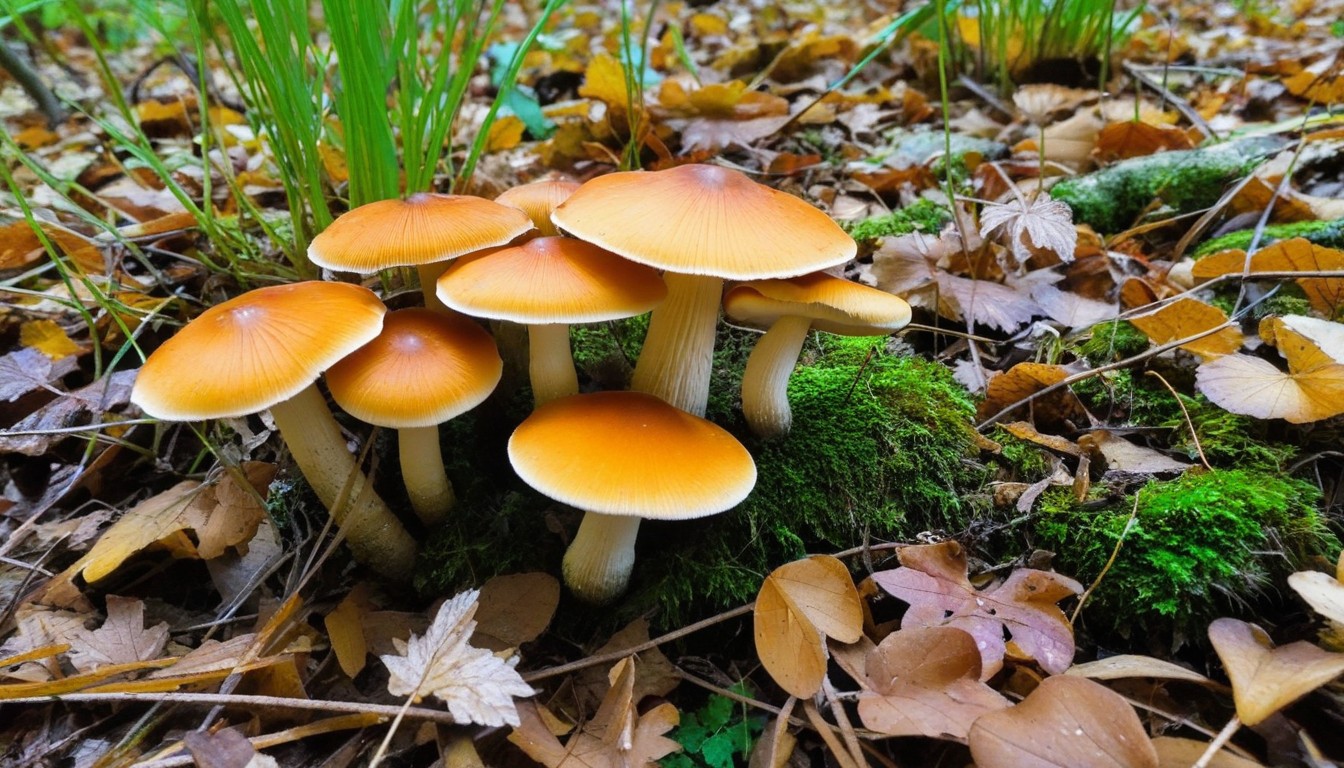
Once you’ve foraged an assortment of fall mushrooms in Pennsylvania, it’s time to get creative in the kitchen! The rich, earthy flavors of these mushrooms are perfect for adding depth to seasonal dishes. Whether you’re a beginner or an experienced chef, our recipe ideas will inspire you to try something new.
1. Wild Mushroom Soup
A hearty, warming soup that is perfect for those chilly autumn nights. Using a mixture of mushrooms like Porcini, Chanterelles and Black Trumpet, a homemade vegetable broth and a touch of cream, this soup will become a staple in your fall recipe collection. Serve with a slice of crusty sourdough bread.
2. Mushroom and Gruyere Quiche
This savory quiche is a perfect brunch dish for a cozy weekend in. Combining sautéed wild mushrooms with creamy Gruyere cheese, eggs, and cream in a homemade crust, this quiche is both indulgent and comforting. Serve with a simple green salad dressed with balsamic vinaigrette.
3. Mushroom Risotto
This classic Italian dish is perfect for letting the flavors of autumn mushrooms shine. Use a variety of mushrooms like Shiitakes, Lobster, and Oyster mushrooms, and add them to a creamy, simmering arborio rice with garlic and herbs. Top with shavings of Parmesan cheese and a sprinkle of chopped Italian parsley.
4. Bacon and Mushroom Stuffing
A classic fall side dish with a twist. This savory stuffing combines sautéed mushrooms with crumbled bacon, caramelized onions, thyme, sage, and cubed sourdough bread. Serve alongside your favorite roasted meats and veggies for a comforting and delicious feast that will satisfy your cravings.
5. Mushroom and Goat Cheese Tart
A light and delicious appetizer that is perfect for entertaining. Spread homemade tart dough with tangy goat cheese, then top it with sautéed mushrooms like morels, cremini, and portobellos, and sprinkle with fresh herbs to give it freshness. Serve it in small slices with a glass of wine.
Poisonous Fall Mushrooms in PA: Safety Precautions
If you’re planning to go foraging for fall mushrooms in Pennsylvania, it’s essential to understand the potential risks that come with it, particularly when it comes to distinguishing between edible and poisonous mushrooms. While many mushroom species are safe and delicious to eat, some can cause severe illness or even death if ingested. Here are some safety precautions to follow:
Learn about dangerous mushrooms commonly found in Pennsylvania
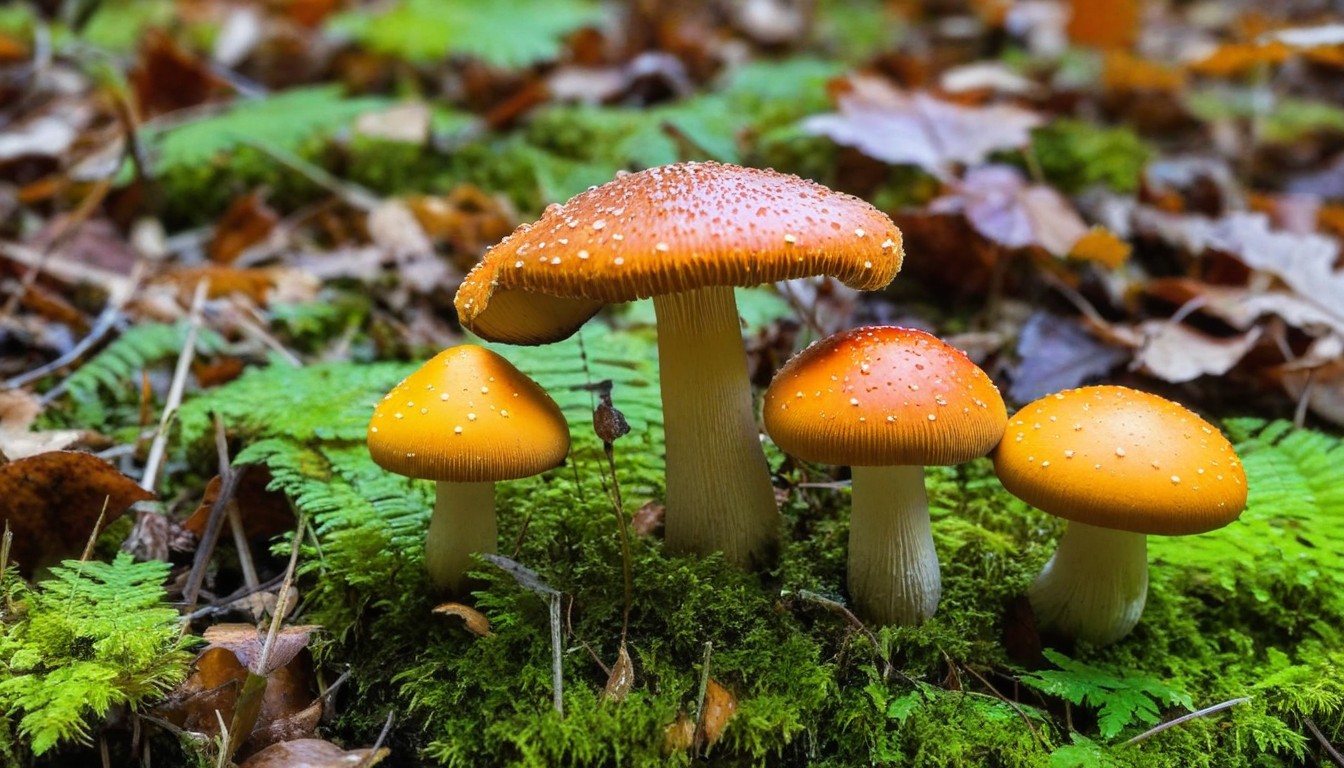
Before embarking on a fall mushroom foraging expedition, learn to identify the dangerous mushroom species commonly found in Pennsylvania, such as the deadly Galerina marginata and the destroying angel (Amanita bisporigera). Avoid picking these mushrooms or any other species if you are unsure about their identity.
Precautionary measures to prevent accidental ingestion
Take precautionary measures to prevent the accidental ingestion of poisonous mushrooms, such as wearing gloves when picking mushrooms, as some poisonous varieties can be absorbed through the skin. As a rule of thumb, never eat any wild mushrooms raw, even those that are known to be edible, as this may result in indigestion or food poisoning. Cooking mushrooms thoroughly can help destroy harmful toxins.
When in doubt, consult an expert
If you’re unsure about the identity of a mushroom species you found, don’t risk it. Instead, consult an experienced mushroom forager or an expert mycologist who can help verify the species and provide you with valuable insights.
Remember to always prioritize your safety when foraging for fall mushrooms in Pennsylvania. By following these safety precautions, you can lower the risk of poisoning and enjoy a rewarding and safe foraging experience.
Legal and Environmental Considerations for Fall Mushroom Foraging in PA
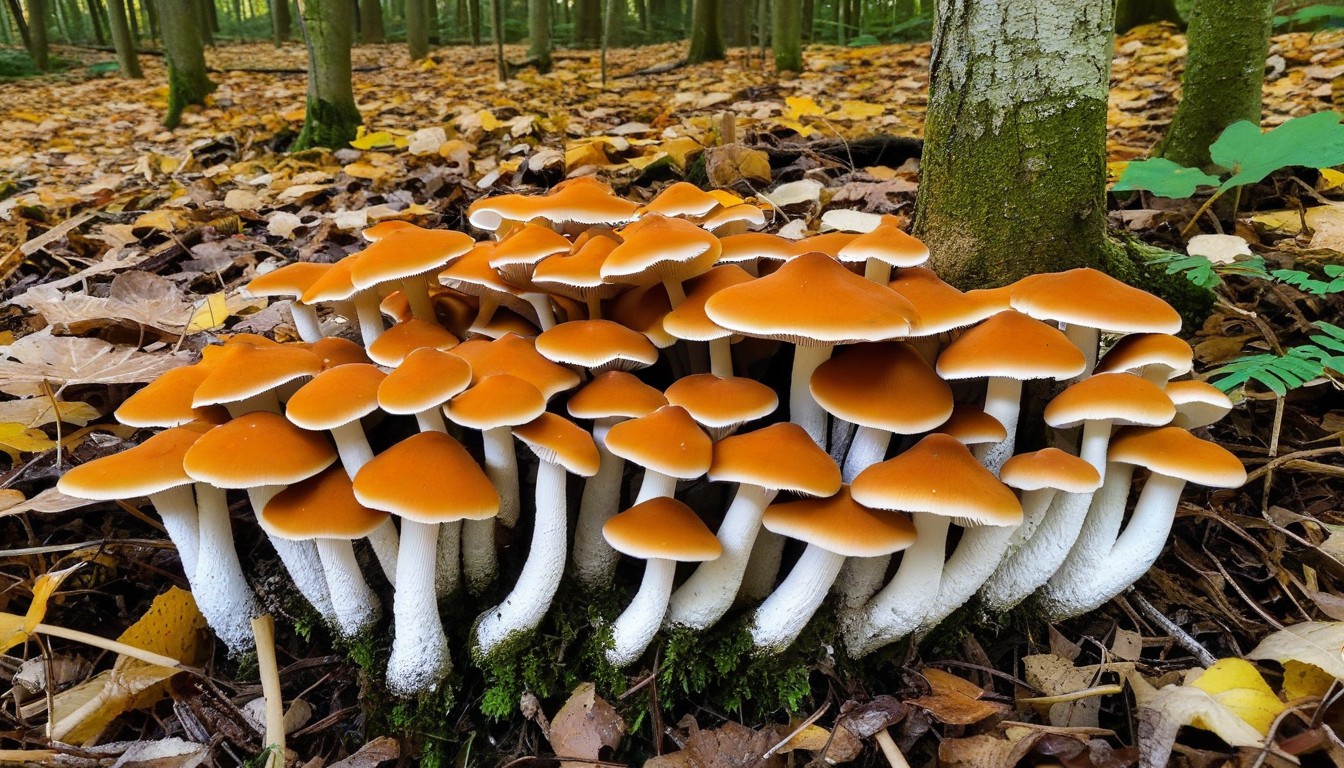
Before embarking on a fall mushroom foraging trip in Pennsylvania, it’s important to consider the legal and environmental aspects of this activity.
Firstly, it is essential to obtain the necessary permits to forage on public lands. Each state park and forest may have its own rules and regulations regarding mushroom hunting, so it’s best to check with local authorities before setting out.
Secondly, ethical harvesting practices are crucial to preserve the delicate ecosystem in which fall mushrooms grow. When foraging, make sure to only collect mature mushrooms, leaving smaller or unripe specimens behind to allow for spore dispersal and growth in future seasons. Avoid damaging the surrounding vegetation and wildlife, and never disturb nesting or hibernating animals.
Finally, it’s important to contribute to conservation efforts to protect the natural habitats where fall mushrooms grow. You can do this by joining local groups or organizations working to preserve forested areas or donating to relevant causes. By foraging responsibly and supporting these initiatives, we can ensure the future availability of fall mushrooms for generations to come.
Considerations | Best Practices |
|---|---|
Obtaining permits | Check with local authorities for regulations and obtain necessary permits to forage on public lands. |
Ethical harvesting practices | Only collect mature mushrooms, avoiding damage to vegetation and wildlife, and not disturbing nesting or hibernating animals. |
Contributing to conservation efforts | Join local organizations or donate to relevant causes to protect natural habitats and preserve fall mushroom populations. |
By following these legal and environmental guidelines, we can enhance our fall mushroom foraging experience while also protecting the environment and contributing to conservation efforts.
Health Benefits of Fall Mushrooms
Fall mushrooms offer a range of health benefits, making them an excellent addition to your diet.
Immune-Boosting Properties
Many fall mushrooms, such as the maitake and shiitake, contain beta-glucans, which can boost your immune system. Beta-glucans stimulate the production of white blood cells, which help fight off infections and diseases.
Potential Anti-Inflammatory Effects
Research suggests that some fall mushrooms, such as porcini mushrooms, may have anti-inflammatory effects. Inflammation plays a role in several chronic conditions, including arthritis and heart disease. Incorporating fall mushrooms into your diet may help reduce inflammation and promote overall health.
Nutritional Value
Fall mushrooms are a nutrient-rich food source, providing a range of vitamins and minerals. For example, shiitake mushrooms are rich in B vitamins, copper, and selenium, while porcini mushrooms contain high levels of potassium and phosphorus.
“Mushrooms are a low-calorie and protein-rich food source, making them ideal for those seeking a healthy diet.”
Incorporate fall mushrooms into your meals for a tasty and nutritious boost to your diet.
Conclusion
As the leaves begin to fall and the air turns crisp, fall mushroom foraging in Pennsylvania offers a unique opportunity to explore the beauty of nature and indulge in delicious culinary treats. With our comprehensive guide, you’ll be equipped with the knowledge and confidence to embark on a fruitful autumn adventure.
Remember to always prioritize safety and ethical harvesting practices, and to obtain any necessary permits before venturing out. By respecting the environment and the mushrooms that call it home, you can enjoy the bounty of fall while preserving the integrity of our natural world.
So grab your basket, put on your hiking boots, and get ready to discover the wonders of fall mushrooms in Pennsylvania. Happy foraging!
FAQ
What types of fall mushrooms can I find in Pennsylvania?
Pennsylvania is home to a wide variety of fall mushrooms. Some of the commonly found species include Porcini, Chantarelle, Morel, and Hen-of-the-Woods.
How can I identify fall mushrooms in Pennsylvania?
When identifying fall mushrooms, it’s important to look for key features such as the shape, color, texture, and the presence of gills or pores. Consulting field guides and expert mushroom foragers can also help you distinguish between edible and toxic varieties.
Where are the best locations for fall mushroom foraging in Pennsylvania?
Pennsylvania offers numerous prime locations for fall mushroom foraging. State parks, forests, and wooded areas with diverse ecosystems are great places to start your foraging adventure.
What are some hunting tips and techniques for finding fall mushrooms in Pennsylvania?
Timing is crucial when it comes to fall mushroom foraging. Consider going out after rainfall and when temperatures are cool. Look for specific habitats and learn to identify the trees or plants associated with certain mushroom species. Carrying a mushroom knife or basket can also be helpful.
Can I eat the fall mushrooms I find in Pennsylvania?
While some fall mushrooms in Pennsylvania are edible and delicious, it is essential to be cautious. Only consume mushrooms that you can positively identify as safe and edible. If you are unsure, consult with an experienced forager or mycologist.
Are there any poisonous fall mushrooms in Pennsylvania?
Yes, there are poisonous fall mushrooms in Pennsylvania. Some species, such as the Death Cap and Destroying Angel, can be highly toxic and even deadly if ingested. It is crucial to educate yourself and be able to differentiate between edible and poisonous varieties.
What safety precautions should I take when foraging for fall mushrooms?
When mushroom foraging, always err on the side of caution. Only consume mushrooms that you can positively identify as safe. Be sure to carry a field guide, wear appropriate clothing, and avoid picking mushrooms from contaminated areas. If in doubt, seek advice from experts.
Are there any legal considerations for fall mushroom foraging in Pennsylvania?
While fall mushroom foraging is generally allowed for personal use, certain areas may have specific regulations or restrictions. It’s important to familiarize yourself with local laws, obtain necessary permits if required, and practice ethical harvesting to ensure the sustainability of mushroom populations.
What are some health benefits of fall mushrooms?
Fall mushrooms are not only flavorful but also offer various health benefits. They can be a good source of nutrients, including vitamins, minerals, and antioxidants. Some mushrooms are known for their immune-boosting properties, potential anti-inflammatory effects, and possible contributions to overall well-being.

